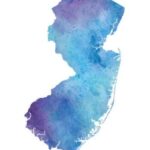Distributed energy resources and electrification are causing big changes in distribution grid operations and planning. If you work for a state energy office, public utility commission, or a utility consumer advocate office, you can attend a free training session on integrated distribution system planning.
The training is being offered by the National Association of State Energy Officials (NASEO), National Association of Regulatory Utility Commissioners (NARUC), and Lawrence Berkeley National Laboratory, with support from the US Department of Energy.
The content of the three trainings will be identical, and state participants are welcome to attend any one of them.
-
December 11-12 – Charlotte, NC: Registration Now Open! Hotel reservations can be made at the GSA rate through a hotel room block (until full) here. Limited travel stipends will be available upon request. If you require travel assistance, please reach out to Jessica Diaz (jdiaz@naruc.org) before making travel arrangements.
-
March 11-12 – Detroit, MI: Registration Now Open!
-
April 23-24 – Salt Lake City, UT: (registration open soon)
The training includes technical courses, peer-sharing, office hours with trainers, and a half-day state action planning workshop covering all new topics, with a focus on planning for electrification and distributed energy resources (DERs).
Technical courses cover the following topics:
-
Integrated Distribution System Planning Overview
-
Forecasting Loads and DERs: Emerging Methods for New Challenges
-
Distribution Planning Modeling
-
Distribution Planning With DERs: Integration and Valuation
-
Considering Equity and Engaging Stakeholders
-
Distribution Planning for Transportation Electrification
-
EV Rate Design
-
Distribution Planning for Building Electrification
-
Coordination Across Planning Processes
To learn more about Berkeley Lab’s research on integrated distribution system planning, click here.
The training, Integrated Distribution System Planning 2.0: Planning for Electrification and Distributed Energy Resources, is supported by the U.S. Department of Energy’s Office of Electricity and the Building Technologies Office.




